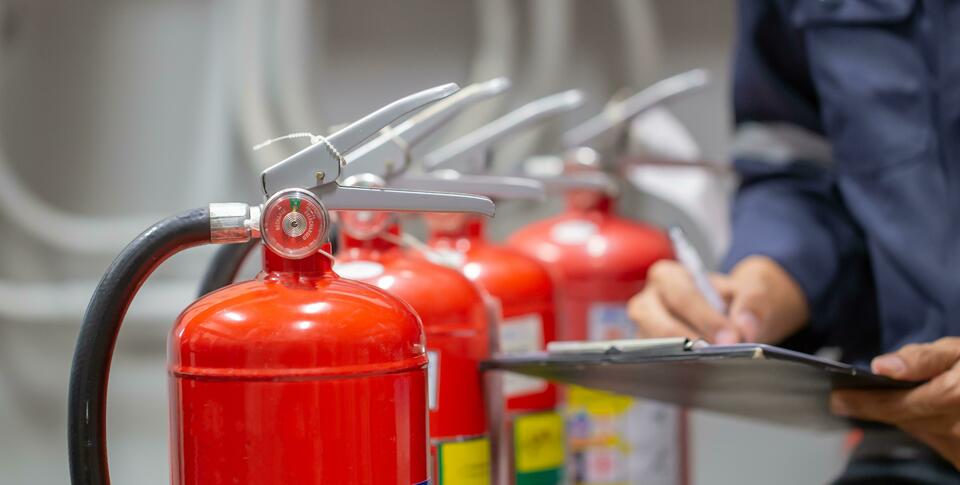
If you’re in charge of a business space, you have a duty of care to keep any building occupants safe. You might be an employer, building owner, facilities manager, or even a landlord. Either way, it’s your responsibility to carry out a fire risk assessment or arrange fire risk assessment services on your behalf.
Knowing how often to conduct fire risk assessments and the steps you need to follow is absolutely vital for protecting residents and visitors from potentially devastating emergencies.
The Regulatory Reform (Fire Safety) Order 2005 sets out guidance that all businesses and landlords need to adhere to. As well as covering who is responsible for fire safety in a particular setting and emergency measures you need in place, there is a comprehensive section on fire risk assessments.
If you don’t follow fire safety guidelines (including fire risk assessments), you could face £5,000 or more in fines and a prison sentence of up to two years. But worse than that, you could be putting lives in danger.
To make sure you comply with UK guidelines, you need to carry out the following steps during your fire risk assessment. Throughout the process, make sure you document everything in writing.
This first step is all about spotting anything that could, in the worst case scenario, lead to a fire. Depending on your industry and building, fire hazards can vary greatly, from electrical equipment and gas cookers in hospitality spaces to pressurised oxygen cylinders in healthcare settings.
Be as thorough as possible, noting down hazards in all rooms and areas of the business premises.
You’ll also need to identify anyone who could be at risk in the event of a fire. This could include employees and contractors, members of the public, or residents. It’s especially important to identify any vulnerable persons, such as elderly residents or those with disabilities, who may not be able to evacuate quickly if an emergency occurs.
How can you mitigate the risks you’ve identified? This is an essential part of the process, where you must set out a plan of action to:
In the unfortunate event that a fire (or any other emergency) occurs, a clear evacuation plan will help ensure everyone in the building gets out safely. Your evacuation plan should clearly mark out fire exits and escape routes, designate a safe assembly point, and document your detection and alarm systems.
Take a look at our guide for more support on how to put an effective evacuation plan together.
Wondering how often you need to review or redo your fire risk assessment?
It’s good practice to arrange a fire risk assessment review once a year or after any major changes. For example, if the building has been renovated or changed use or if there’s been a change to the number of people using the space.
You also need to carry out a risk assessment if a fire safety officer tells you to or if your building is involved in an incident relating to fire safety.
Outside of reviews, you should consider arranging a full fire risk assessment every 3-4 years at a minimum.
While it’s possible to carry out fire risk assessments yourself as the appointed ‘responsible person’, it can also be helpful to look into professional fire risk assessment services. The team at phs Compliance holds full accreditation to carry out comprehensive fire risk assessments and alarm system checks to the highest standards.
Our experts will make sure every aspect of your risk assessment is in line with government regulations, bringing you peace of mind knowing your business is compliant and your building occupants are protected.
To learn more about our fire safety services, please get in touch.
phs Compliance began working with our 'Big Four' food and grocery retail customer in 2009, delivering fixed wire and portable appliance inspection and testing services across one hundred per cent of
phs Compliance has delivered multiple compliance services to leading UK hotel groups for many years. We’ve delivered electrical installation inspection services, portable and fixed appliance
Through our Tier 1 facilities management client, phs Compliance self-delivered project services for the installation and commissioning of replacement emergency lighting to support one of two acute
Through competitive tendering with one of our major facilities management customers, phs Compliance was awarded a major contract delivering comprehensive electrical, fire and gas safety inspection
This site uses cookies that enable us to make improvements, provide relevant content, and for analytics purposes. For more details, see our Cookie Policy. By clicking Accept, you consent to our use of cookies.